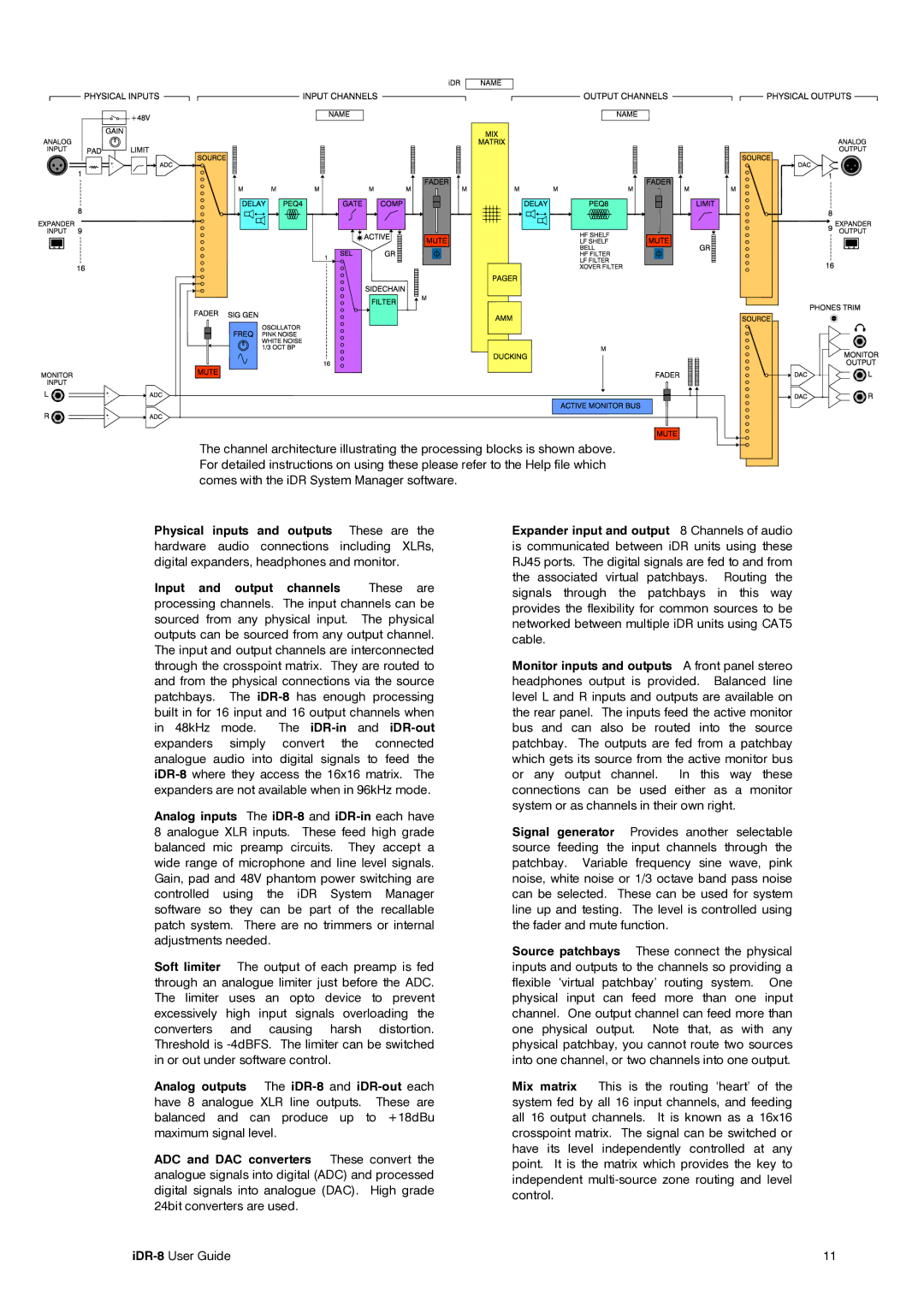
+ |
- |
+ |
- |
+ |
- |
The channel architecture illustrating the processing blocks is shown above. For detailed instructions on using these please refer to the Help file which comes with the iDR System Manager software.
Physical inputs and outputs These are the hardware audio connections including XLRs, digital expanders, headphones and monitor.
Input and output channels These are
processing channels. The input channels can be sourced from any physical input. The physical outputs can be sourced from any output channel. The input and output channels are interconnected through the crosspoint matrix. They are routed to and from the physical connections via the source patchbays. The
Analog inputs The
Soft limiter The output of each preamp is fed through an analogue limiter just before the ADC. The limiter uses an opto device to prevent excessively high input signals overloading the converters and causing harsh distortion. Threshold is
Analog outputs The
ADC and DAC converters These convert the analogue signals into digital (ADC) and processed digital signals into analogue (DAC). High grade 24bit converters are used.
Expander input and output 8 Channels of audio
is communicated between iDR units using these RJ45 ports. The digital signals are fed to and from the associated virtual patchbays. Routing the signals through the patchbays in this way provides the flexibility for common sources to be networked between multiple iDR units using CAT5 cable.
Monitor inputs and outputs A front panel stereo headphones output is provided. Balanced line level L and R inputs and outputs are available on the rear panel. The inputs feed the active monitor bus and can also be routed into the source patchbay. The outputs are fed from a patchbay which gets its source from the active monitor bus or any output channel. In this way these connections can be used either as a monitor system or as channels in their own right.
Signal generator Provides another selectable source feeding the input channels through the patchbay. Variable frequency sine wave, pink noise, white noise or 1/3 octave band pass noise can be selected. These can be used for system line up and testing. The level is controlled using the fader and mute function.
Source patchbays These connect the physical inputs and outputs to the channels so providing a flexible ‘virtual patchbay’ routing system. One physical input can feed more than one input channel. One output channel can feed more than one physical output. Note that, as with any physical patchbay, you cannot route two sources into one channel, or two channels into one output.
Mix matrix This is the routing ‘heart’ of the system fed by all 16 input channels, and feeding all 16 output channels. It is known as a 16x16 crosspoint matrix. The signal can be switched or have its level independently controlled at any point. It is the matrix which provides the key to independent
| 11 |
